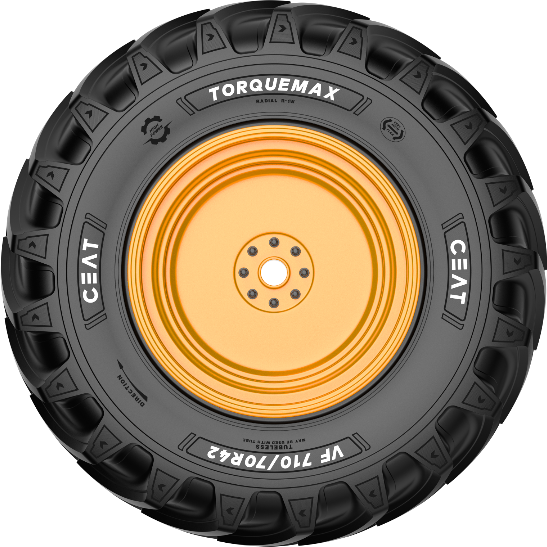



Have Questions Related to CEAT Specialty Tires?
FAQs
Indeed, sprayers demand unique tires owing to their specific application. Tall tires ensure that the sprayer body passes over the crops without causing damage. Following seeding, a wider floatation tire for sprayers is preferred to prevent the sprayer from getting stuck on damp ground. On the other hand, after plantation, skinny tires are used to prevent the sprayer from unintentionally running over the crops.
Sprayer tires contain distinct compounds that give them greater flexibility, allowing them to withstand increased pressure. These compounds are IF (Increased Flexion) and VF (Very High Flexion) sprayer tires. Compared to standard sprayer tires, sprayer tires can bear 20% more load, while VF sprayer tires can support 40% more load while functioning at the same pressure.
Floatation sprayer tires are typically available in sizes 650/65 R38, 1000/50 R25, and 1050/50 R32. On the other hand, row crop sprayer tires usually come in sizes such as IF340/85 R38, IF380/90 R46, IF320/105 R54, and IF380/90 R54.
Flotation sprayer tires have a wider contact patch and a lower tire pressure, which helps to distribute the weight of the sprayer over a larger area to reduce soil compaction and minimize crop damage. These tires are typically used for pre-planting and post-harvest applications where the ground may be wet and soft. On the other hand, row crop sprayer tires are narrower and taller, allowing the sprayer to pass through the rows of crops without damaging them. These tires are typically used during the growing season when the crops are established and require precision spraying. The main difference between flotation and row crop sprayer tires is their size and tread pattern, with flotation tires designed for wet and soft ground and row crop tires designed for established crops and precision spraying.
CEAT Specialty Sprayer Tires are specialized tires designed specifically for use on agricultural sprayers. They are built with durable compounds and tread patterns that reduce the risk of getting stuck, even while using crop row tires, and minimize damage to the planted crop.





